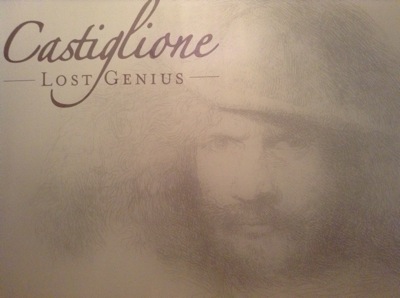
If you’ve heard of Giovanni Benedetto Castiglione give yourself ten out of ten and skip along to the new exhibition at The Queen’s Gallery. If you haven’t, fear not, there’s a reason why this show is subtitled Lost Genius. Appreciation of Castiglione’s work has been lost over the years since his death in 1664 and this show curated by Martin Clayton is intended to reintroduce the Baroque artist to a wider public.
The Queen’s Gallery are aiming for quite a rehabilitation of his reputation – the website describes Castiglione as ‘perhaps the most innovative and technically brilliant Italian draftsman of his time.’ His draughtsmanship is called ‘extraordinarily original’ and one of his works, Omnia Vanitas is described as ‘one of the most exciting works on paper of the entire Baroque’.
Is this exhibition really the rediscovery of an amazing talent or is it actually the rediscovery of an album of Castiglione drawings in the Royal Collection?

Giovanni Benedetto Castiglione was born in Genoa in 1609. He studied under Bernardo Strozzi and studied the works of Rubens, whose work was accessible in the city. The Royal Collection acquired many of Castiglione’s works on paper when George III was King, and a large selection are on show until March 16th 2014. The show is mainly filled with his oils on paper, which unusually were not created as part of the process of making a larger painting. Instead these images are finished pieces of work. Castiglione worked with no under-drawing, and seemingly with no preparatory drawing either as none have been found. He attacks the paper without hesitation, his fluid strokes only becoming more staccato with age.
He admired Tiepolo, and the early parts of the exhibition show how his style developed by copying other artists like Lorrain, Titian and Poussin. He had realised that his pastoral style learned in Genoa was not what was wanted in 17th century Rome and spent time developing his techniques. He is seen as a skilful etcher, with a talent for capturing the effects of chiaroscuro.
Where Castiglione scores highly over most of his contemporaries is in his life. He was towards the Caravaggio end of the personality-type distribution curve, and he got into the sort of scrapes that meant he had to leave cities ASAP with no going-away party. One story tells of a dispute over the value of an altarpiece he had painted for the Doge of Genoa. Displeased with the price he was offered he pulled a dagger and slashed it to pieces in front of the court. Cue another sharp exit, and maybe a Hollywood film if this exhibition does well.
Of course today the bad-boy parallels with Caravaggio will only help his reputation, and add a second meaning to the Lost Genius tag. If he hadn’t squandered his talent, maybe he could have left a more enduring legacy – though without the spontaneity in his private life, the freedom of stroke in his pictures would not exist. He is a skilful and technically inventive artist, who between escapades found time to invent the monotype. However the title genius is a compliment too far.

Leave a Reply